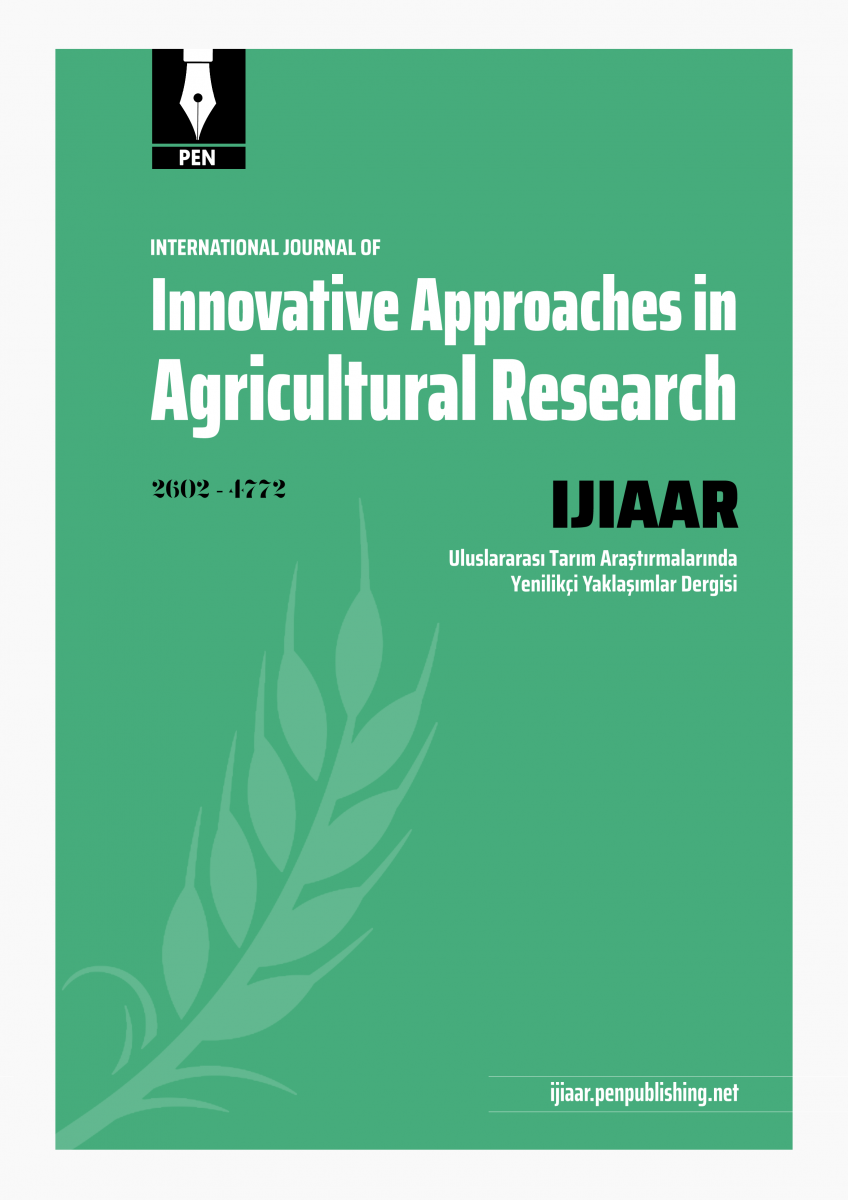- Abrasheva, P., Bambalov, K. & Georgiev A. (2008). Vine growing and winemaking. Publishing House “Matkom”, Sofia, pp. 15-20. (in Bulgarian) [Google Scholar]
- Arnaudov, V. & Vassilev, D. (2020). Reaction of some nectarine cultivars to Stigmina carpophila (Lev.) Ellis. Bulgarian Journal of Crop Science, 57(4), 18-22. (in Bulgarian) [Google Scholar]
- Artem, V., Antoce, A. O., Geana, E. I. & Ranca, A. (2021). Effect of grape yield and maceration time on phenolic composition of `Fetească neagră` organic wine. Notulae Botanicae Horti Agrobotanici Cluj-Napoca, 49(2), 12345. [Google Scholar]
- Atak, A., Göksel, Z. & Çelik, H. (2017). Relations between downy/powdery mildew diseases and some phenolic compounds in Vitis spp. Turkish Journal of Agriculture and Forestry, 41(1), 69-81. [Google Scholar]
- Chobanova, D. (2007). Textbook for exercises in enology. Academic Publishing House of University of Food Technology, Plovdiv, pp. 51-74. (in Bulgarian) [Google Scholar]
- Dimitrova, D., Peikov, V., Dimitrov, V. & Dimitrova, V. (2013). Biological production of grapes and wine in Bulgaria - status and problems. International scientific conference “Vine growing and winemaking”, Institute of Viticulture and Enology, Odessa, Ukraine. Conference proceedings, pp. 58-63. (in Russian) [Google Scholar]
- Dutra, M. C. P., Rodrigues, L. L., Oliveira, D., Pereira, G. E. & Lima, M. S. (2018). Integrated analyses of phenolic compounds and minerals of Brazilian organic and conventional grape juice and wines: Validation of a method for determination of Cu, Fe and Mn. Food Chemistry, 269, 157-165. [Google Scholar]
- Gonzalez, P. A., Parga-Dans, E., Blazquez, P. A., Luzardo, O. P., Peña, M. L. Z., Gonzalez, M. M. H., Rodriguez-Hernandez, A. & Andujar, C. (2021). Elemental composition, rare earths and minority elements in organic and conventional wines from volcanic areas: The Canary Islands (Spain). PLoS ONE, 16(11), e0258739. [Google Scholar]
- Hasanaliyeva, G., Chatzidimitrou, E., Wang, J., Baranski, M., Volakakis, N., Pakos, P., Seal, C., Rosa, E. A. S., Markellou, E., Iversen, P. O., Vigar, V., Willson, A., Barkla, B., Leifert, C. & Rempelos, L. (2021). Effect of organic and conventional production methods on fruit yield and nutritional quality parameters in three traditional Cretan grape varieties: results from a farm survey. Foods, 10(2), 476. [Google Scholar]
- Ivanova, D. (2019). Principles of organization of organic agriculture and its development in Bulgaria. New Knowledge Journal of Science, 8(2), 54-59. (in Bulgarian) [Google Scholar]
- Kabakchieva, T. (2017). Organic farming – the future of the agricultural economy of Bulgaria. Dialogue, 4, 48-65. (in Bulgarian) [Google Scholar]
- Kostadinova, M. (2010). About the control against grapevine mildew (Plasmopara viticola) in Bulgaria (review). Viticulture and Winemaking, 5, 26-44. (in Bulgarian) [Google Scholar]
- Kostadinova, M., Lyubenova, T. & Genov, N. (2009). Phytopatological and entomological status of vineyards from the region of Pleven town under the drought conditions in 2007 and 2008. Journal of Mountain Agriculture on the Balkans, 12(5), 1089-1102. [Google Scholar]
- Kostadinova, M., Lyubenova, T., Katerova, L. & Peykov, P. (2012). Pest management in organic production of grapes in the Institute of Viticulture and Enology, town of Pleven – results and problems. International scientific conference “Scientific achievements - a contribution to efficient viticulture and winemaking”, Institute of Viticulture and Enology, Pleven, Bulgaria. Conference proceedings, pp. 159-166. (in Bulgarian) [Google Scholar]
- Kostadinova, P. & Popov, V. (2015). Basic principles and methods of organic farming. New Knowledge, https://uard.bg/files/custom_files/files/documents/New%20knowledge/ year1_n3/paper_kostadinova_y1n3.pdf. (in Bulgarian) [Google Scholar]
- Lorenzo, C., Garde-Cerdan, T., Lara, J. F., Martinez-Gil, A. M., Pardo, F. & Salinas, M. R. (2015). Volatile composition of wines elaborated from organic and non-organic grapes. Fermentation Technology, 4(1), 1000117. [Google Scholar]
- Mulero, J., Pardo, F. & Zafrilla, P. (2010). Antioxidant activity and phenolic compounds in conventional and organic red grapes (var. Monastrell). CyTA – Journal of Food, 8(3), 185-191. [Google Scholar]
- Mulero, J., Zafrilla, P., Cayuela, J. M., Martinez-Cacha, A. & Pardo, F. (2011). Antioxidant activity and phenolic compounds in organic red wine using different winemaking techniques. Journal of Food Science, 76(3), C436-40. [Google Scholar]
- OIV. (2022). Compedium of international methods of wine and must analysis. International Organization of Vine and Wine, v. 1, https://www.oiv.int/public/medias/8657/2022-eng-compediumvol1.pdf. [Google Scholar]
- OIV. (2022b). Compedium of international methods of wine and must analysis. International Organization of Vine and Wine, v. 2, https://www.oiv.int/public/medias/8657/2022-eng-compediumvol2.pdf. [Google Scholar]
- Ostroukhova, E., Peskova, I., Lutkova, N. & Stranishevskaya, E. (2021). The effect of the organic plant protection system on the chemical composition and quality of grapes and red wines. E3S Web of Conference, 285(5), 05024. [Google Scholar]
- Parlevliet, G. & McCoy, S. (2001). Organic grapes and wine: a guide to production. Department of Primary Industries and Regional Development, Western Australia, Perth, Bulletin 4516. [Google Scholar]
- Prajongjai, T., Poolsawat, O., Pornbungkerd, P., Wongkaew, S. & Tantasawat, P. A. (2014). Evaluation of grapevines for resistence to downy mildew (Plasmopara viticola) under laboratory and field conditions. South African Journal of Enology and Viticulture, 35(1), 43-50. [Google Scholar]
- Regulation (BG) № 22/4.07.2001 on the organic production of plants, plant products and foods of plant origin and its marking on them. https://www.mzh.government.bg/MZH/Libraries/%D0%9D%D0%BE%D1%80%D0%BC_%D0%90%D0%BA%D1%82%D0%BE%D0%B2%D0%B5-%D0%9D%D0%B0%D1%80%D0%B5%D0%B4%D0%B1%D0%B8/Naredba_22_04072001.sflb.ashx. (in Bulgarian) [Google Scholar]
- Regulation (EU) № 889/5.09.2008 laying down detailed rules on organic production and labelling of organic products https://eur-lex.europa.eu/LexUriServ/ LexUriServ.do?uri=CONSLEG:2008R0889:20100701:EN:PDF. [Google Scholar]
- Regulation (EU) № 203/2012 as regards detailed rules on organic wine. https://eur-lex.europa.eu/LexUriServ/LexUriServ.do?uri=OJ:L:2012:071:0042:0047:en:PDF. [Google Scholar]
- Regulation (EU) № 848/2018 on organic production and labelling of organic products https://eur-lex.europa.eu/legal-content/EN/TXT/?uri=CELEX%3A32018R0848. [Google Scholar]
- Tsvetanov, О. (2001). How to taste wine. Publing House “Gourmet”, Sofia, pp. 43-46. (in Bulgarian) [Google Scholar]
- Vachevska, D., Dimitrov, V. & Simeonov, I. (2007). Biological production of grapes and wine – state, tendencies and possibilities for development in Bulgaria (review). International scientific conference “Sustainable development of viticulture and winemaking based on knowledge”, Institute of Viticulture and Enology, Pleven, Bulgaria. Conference proceedings, pp. 256-264. (in Bulgarian) [Google Scholar]
- Yankov, А. (1992). Technology of winemaking. Publing House “Zemizdat”, Sofia, pp. 141-175. (in Bulgarian) [Google Scholar]
- http://frenchscount.com/organic-wines [Google Scholar]
- http://savagevines.co.uk/the-health-benefits-of-organic-wine [Google Scholar]
- https://ec.europa.eu/info/food-farming-fisheries/farming/organic-farming/organics-glance_bg [Google Scholar]
|

